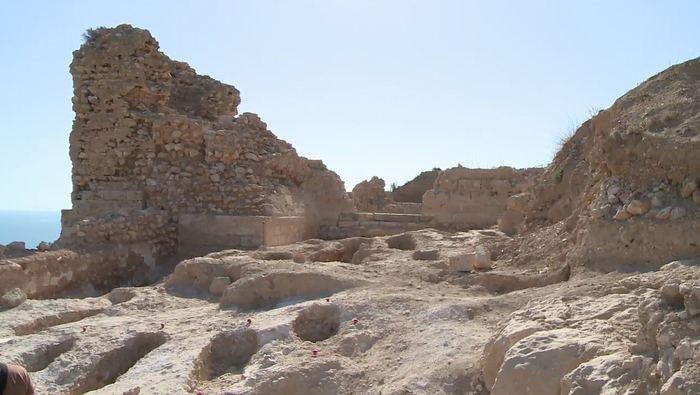

Guidelines for submitting articles to San Pedro del Pinatar Today
Hello, and thank you for choosing San Pedro del Pinatar.Today to publicise your organisation’s info or event.
San Pedro del Pinatar Today is a website set up by Murcia Today specifically for residents of the urbanisation in Southwest Murcia, providing news and information on what’s happening in the local area, which is the largest English-speaking expat area in the Region of Murcia.
When submitting text to be included on San Pedro del Pinatar Today, please abide by the following guidelines so we can upload your article as swiftly as possible:
Send an email to editor@spaintodayonline.com or contact@murciatoday.com
Attach the information in a Word Document or Google Doc
Include all relevant points, including:
Who is the organisation running the event?
Where is it happening?
When?
How much does it cost?
Is it necessary to book beforehand, or can people just show up on the day?
…but try not to exceed 300 words
Also attach a photo to illustrate your article, no more than 100kb

HOME > ALICANTE VEGA BAJA > CALLOSA DE SEGURA
town
Callosa de Segura Today

Callosa de Segura is one of the towns and municipalities which cluster around the Sierra de Callosa, one of the mountainous outcrops which punctuate the otherwise flat plain of the Vega Baja del Segura area in the south of the province of Alicante. It is not one of those areas which until now have attracted large numbers of residential tourists, but nonetheless offers various attractions to the short-stay visitor to this part of the Costa  Blanca province.
Blanca province.
As is the case with so many other places in the province of Alicante, the history and identity of Callosa are defined by the geography of its location, and in particular by the Segura flood plain and the mountains with which the town shares its name. The fertile soil of the flood plain has led to agriculture being the basis of the local economy, all the more so since the arrival of the Tajo-Segura water supply canal in the 20th century, although at the same time important shoemaking and other businesses have thrived here. For this reason, despite occupying an area of only 27 square kilometres it is one of the largest towns in terms of population in the Vega Baja.
In the past the agricultural riches gave Callosa great importance, as is reflected in the impressive church dedicated  to Saint Martin of Tours (declared a National Monument in 1980), and the mountains behind the town have provided protection to the local population throughout the Moorish occupation of Spain and right back to the Bronze Age. The remains of a medieval castle still perch on an outcrop above the town, and the town centre, which contains three museums, provides plenty of opportunities to appreciate the historical heritage of the area.
to Saint Martin of Tours (declared a National Monument in 1980), and the mountains behind the town have provided protection to the local population throughout the Moorish occupation of Spain and right back to the Bronze Age. The remains of a medieval castle still perch on an outcrop above the town, and the town centre, which contains three museums, provides plenty of opportunities to appreciate the historical heritage of the area.
Also standing on the mountainside is the attractive sanctuary of San Roque, which was built between the 16th and 18th centuries and plays a crucial role in the celebrations of the patron saint’s Feast Day in mid-August every year. These celebrations are combined with those of the “Moros y Cristianos”, which, as in many other nearby localities commemorate the Reconquista of the south-east of Spain from the Moors in the 13th century.
Other smaller churches in and around the town include those dedicated to the Virgen del Rosario, the Virgen del  Pilar, the Virgen de los Dolores and the order of San Francisco, the number of places of worship reflecting the fact that Callosa was a town of some significance and importance in centuries past.
Pilar, the Virgen de los Dolores and the order of San Francisco, the number of places of worship reflecting the fact that Callosa was a town of some significance and importance in centuries past.
Both the mountains and the flat plain of the Segura also attract plenty of walkers and climbers, and while the Sierra de Callosa may not be the highest in the area, reaching a maximum altitude of 578 metres above sea level, over 1,500 hectares are protected as a municipal nature reserve. The area is one of the starting points for pilgrims on their way to the Holy Jubilee Year in Caravaca de la Cruz, and the towns of Callosa, Cox and Granja de Rocamora are also featured on the Camino del Cid, which retraces the movements of the legendary historical figure of Rodrigo Díaz “El Cid” in the eleventh century.
Culture is also an important draw in Callosa, especially the local fiestas, and of course the locals are  especially proud of their gastronomic traditions as well. In an area so close to the fish and seafood of the Mediterranean and in the middle of such a vast area of productive farmland, there are few better places to sample the typical specialities of the south of the province of Alicante, and the tourist office even suggests a typical dish to accompany each of the fiestas and celebrations which take place throughout the year!
especially proud of their gastronomic traditions as well. In an area so close to the fish and seafood of the Mediterranean and in the middle of such a vast area of productive farmland, there are few better places to sample the typical specialities of the south of the province of Alicante, and the tourist office even suggests a typical dish to accompany each of the fiestas and celebrations which take place throughout the year!

Fun, interactive workshop to fight dementia at Caser Residencial Santo Ángel, MurciaA gathering that brought joy, connection and meaningful interaction The staff at Caser Residencial Santo Ángel nursing home for the elderly in Murcia city recently hosted a warm and uplifting gathering with the Alzheimer’s Association, creating.. 17/11/2025

Costa Blanca Rawhiders Open Day on the second Sunday of every monthGo along to the Rawhiders clubhouse in Callosa de Segura for good food and friendly company The Costa Blanca Rawhiders Motorcycle Club is a group of bikers and motorcycle-lovers that is made up of a mix of retired expats and Spanish locals in the province..
town
Contact Murcia Today: Editorial 000 000 000 /
Office 000 000 000
News Callosa de Segura
Whats On Callosa de Segura
Where To Go Callosa de Segura
Andalucia News Callosa de Segura
Alicante News Callosa de Segura
Lifestyle Callosa de Segura
Spanish News Callosa de Segura
Property Listings Callosa de Segura
Weather Callosa de Segura
Spanish Lifestyle Callosa de Segura
Spanish Travel & Tourism Callosa de Segura
Spanish Arts & Culture Callosa de Segura
Spanish Weather Callosa de Segura
Andalucia Weather Callosa de Segura
Andalucia Lifestyle Callosa de Segura
Andalucia Travel & Tourism Callosa de Segura
Andalucia Arts & Culture Callosa de Segura
Alicante Whats On Callosa de Segura
Alicante Where To Go Callosa de Segura
Alicante Lifestyle Callosa de Segura
Alicante Weather Callosa de Segura
Alicante Property Callosa de Segura
Property News Callosa de Segura
Motoring & Travel Callosa de Segura
Spanish Property News Callosa de Segura
Car Sales Callosa de Segura




